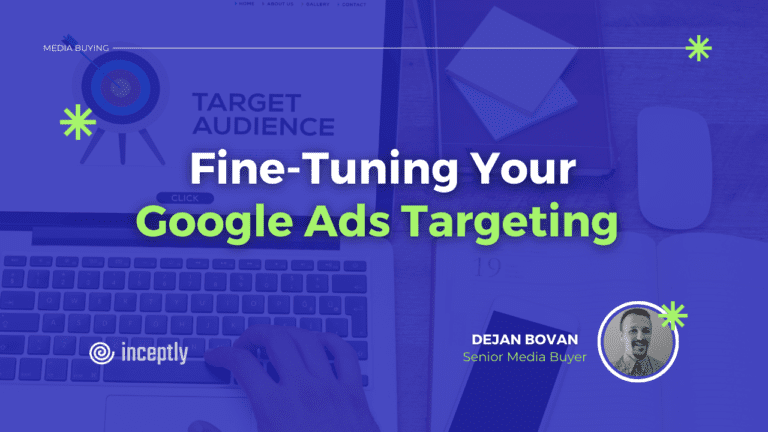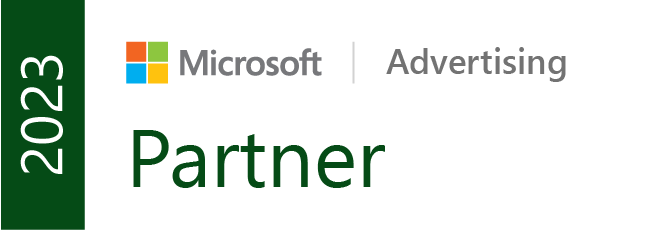
One of the biggest advantages of Google Ads advertising is the wide array of targeting options. Yet, not many people are utilizing it to its full extent.
So let’s talk about how you can fine-tune your targeting to ensure it reaches the right, converting audience.
Want to brainstorm with our team on new ways to scale your business with YouTube Ads (and other performance video platforms)?
Join us for a free YouTube ad brainstorming session👇
Step 1: Understand your audience panel 🧐

The audience name is something that will help you locate it and make it easier to reuse. The more details you put in, the easier it will be to spot it in the pool—but don’t overdo it! For example, a simple naming convention like Demo MF/35+ HH50- can give you a quick hint that you are targeting Males and Females over the age of 35 with a household income below 50%. Figure out a naming convention that works well for you to save both time and nerves!
Now, let’s move into the real work. The Custom Segment section allows you to tailor your In-Market or Affinity audience. Here, you can add keywords that are connected to your audience, including things they actively search for or intend to buy.

Tip: Use your cold search campaigns to gain insights into what your current customers are searching for. This can be of great value since it serves as a clear indicator of your audience’s behavior. 📊
Expand your custom audience with websites they might be visiting. Enter URLs of websites your ideal customers might frequent. Your ads will reach people browsing sites similar to the ones you enter. Additionally, consider entering the names of apps that your ideal customers might use, allowing your ads to target those who download and engage with similar apps.
To assist you in this process, you have the Segment Insight Helper, which estimates the weekly impressions your current setup would provide.

Step 2: Your data 🔄

Now we move to the remarketing section, which you can do in many different ways. Website visitors are those who have reached your site within a specific time frame and under certain rules. You can retarget individuals who have visited your final URL or fine-tune your strategy by retargeting those who added items to their cart or even visited the checkout page. The closer you get to the conversion, the higher the chances that remarketing will work, as these users have already taken more significant steps.


If you are confident in your tracking setup and track smaller conversion actions like Landing Page Views, Add to Cart, or Begin Checkout, I warmly recommend using visitors of a specific tag to simplify the process. Choosing a shorter day period increases the chances of a successful remarketing ad, but it narrows down the pool of people who have interacted with your ad, so keep both factors in mind when making a decision.

The YouTube Users segment allows you to remarket to people who have interacted with your YouTube channel, whether by watching an organic video or through ad placements. This is another great avenue for attracting qualified traffic.

Tip: If you encounter issues with your viewer segment not populating, there’s a high chance you’ve forgotten to uncheck the “Disable interest-based ads” box in your YouTube Studio settings. You can find this setting in YouTube Studio under Settings > Channel > Advanced Settings. Uncheck this option, and your remarketing list should start populating! 📺
Step 3: Customer list 📋
The Customer List segment allows you to leverage your CRM data to further engage with your current visitors. The easiest way to do this is by exporting your customer list as a CSV file and uploading it to Google. Having just an email address will be sufficient, and any extra fields will be analyzed by Google to find their place. If it fails, Google will offer an option to “Fix and Upload,” removing any uncategorized columns and making the file suitable for upload.
Once you do this, you can use it for remarketing, audience signals for Performance Max campaigns (audience signals allow you to add suggestions that help Google AI optimize for your selected goals), or create a Lookalike segment for your Demand Gen campaign (Lookalike segments consist of people who share characteristics with others on an existing “seed” list). You’ll provide the seed list using your first-party data, which may include a customer match list or a list of individuals who’ve interacted with your website, app, or YouTube channel. Google will then use this information to find other potential customers with similar characteristics.
Step 4: Google-defined audience segments 🧑🤝🧑
Google-defined audience segments are separated into four categories: In-Market (people with purchase intentions), Life Events (users going through important life milestones), Detailed Demographics (users based on long-term life facts), and Affinity Segments (users based on their passions, habits, and interests).

Each of these segments can help you narrow down your audience and make your marketing efforts more lucrative. For instance, when we had a homesteading offer, using the Detailed Demographic -> Homeowners audience helped us maintain high spend with a low CPA target goal. Similarly, in the case of a dating offer, targeting Marital Status -> Single yielded significantly higher quality traffic than any other targeting option. Knowing what lies within these lists can be incredibly valuable for your marketing strategy.
Tip: Keep in mind that a simple search for a term will prompt Google Ads to offer you similar audiences that you may benefit from, helping you expand your reach.

Step 5: Exclusions – Who to avoid 🚫
In this section, you’ll decide who to avoid in your marketing efforts. If you have a one-time purchase product, it’s usually wise to exclude all previous purchasers to avoid wasting money on individuals who have already bought your product.

Alternatively, if you’re selling a product that lasts about 30 days, you can exclude anyone who purchased it in the past 30 days. This strategy allows you to retain customers who might be running out of your product and need to reorder.
Step 6: Demographics – Fine-tune your reach 👥
Here, you can set parameters based on Gender, Age, Parental Status, and Household Income (note that household income targeting is only available in some countries). Sometimes, you may have a product that appeals to almost every affinity and in-market group but not to all ages or genders. Here’s where you can fine-tune that.
For example, if you’re selling health supplements for joint health, you might choose to target all genders over 45 years of age while excluding recent purchasers. Conversely, if you have a high-ticket offer appealing to all age groups and genders, you could target the Top Household Income bracket to optimize your ad spend.

Optimized targeting 🚀
Optimized targeting can be a powerful tool for your campaigns, depending on your specific goals. This feature helps you reach new and relevant audiences likely to convert by looking beyond the manually selected audience segments in your campaign. It identifies additional audience segments that you might have missed, thereby enhancing the overall performance of your campaigns.
By allowing Google’s algorithms to discover and target potential customers, you can tap into audiences that may be similar to your existing customers, improving your chances of generating quality leads and conversions. Leveraging optimized targeting effectively can help you expand your reach while maintaining the precision needed for successful advertising.
Conclusion 🏁
By mastering these various Google Ads targeting options, you can maximize your advertising budget while effectively reaching the audience that matters most. From custom segments and remarketing strategies to demographic refinements and exclusions, each step helps you fine-tune your approach, enhancing your campaign’s effectiveness. Remember, the key is to continuously experiment, analyze, and optimize your targeting.
Want to brainstorm with our team on new ways to scale your business with YouTube Ads (and other performance video platforms)?
Join us for a free YouTube ad brainstorming session👇
Want more content like this?
Don’t miss out on the latest news and updates from the world of Direct Response advertising! Subscribe to our newsletter today 👇

Dejan Bovan, Senior Media Buyer
Having started out at Inceptly as a tracking whizz and a certified GTM, GDS, and Segment expert, Dejan then transitioned into media buying. His background and analytical mindset now help him spot and take advantage of untapped opportunities for our clients.
Like this post? Let's continue the conversation!
Get in touch with us by shooting us a quick email or tagging us on LinkedIn or Instagram, and sharing your thoughts. Your feedback helps us keep our blog relevant and interesting.
Get Our Newsletter
Need Help?
Get in touch with us for an insightful evaluation of your ads + actionable tips to help amp up your direct response revenue



